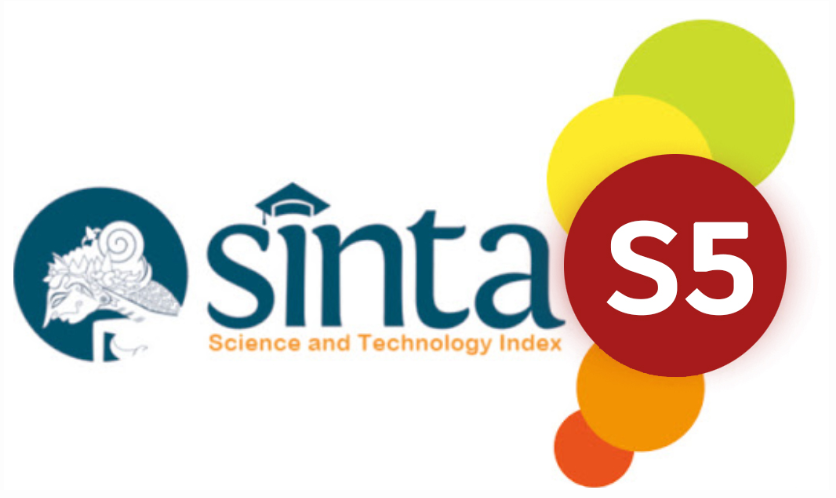Molecular Review: Effects of Physical Exercise in Skeletal Muscle Glucose Uptake
DOI:
https://doi.org/10.32734/sumej.v4i1.4785Keywords:
Exercise, Glucose UptakeAbstract
Muscle contraction requires glucose as its main fuel. Glucose enters the muscle cells through diffusion facilitated by GLUT4. GLUT4 must be translocated from intracellular to the plasma membrane and T tubules during muscle contraction. This literature review will discuss how physical exercise can signal GLUT4 translocation for glucose uptake. Molecular signals induced by physical exercise are very complex and involve various molecules, one of which is AMPK and intracellular Ca concentration.
Downloads
References
E.W. Kraegen, D.E., James, A.B., Jenkins, and D.J., Chisholm, "Dose-response curves for in vivo insulin sensitivity in individual tissues in rats," Am J Physiol - Endocrinol Metab, vol. 11, no.2, pp. 353-362. 1985
B. Holmes, and G.L. Dohm, "Regulation of GLUT-4 Gene Expression during Exercise, " Medicine & Science In Sports & Exercise, pp. 1202-1206. 2004
S.L. Mcgee, B.J.W. Denderen Van, K.F. Howlett, J. Mollica, J.D. Schertzer, B.E. Kemp, et al, "AMP-Activated Protein Kinase Regulates GLUT-4 Transcription by Phosphorylating Histone Deacetylase 5," vo. 57, pp. 860-867. 2008
R.O. Alvim, M.R.Cheuhen, S.R. Machado, A.G.P. Sousa, P.C.J.L. Santos, "General aspects of muscle glucose uptake," An Acad Bras Cienc, vol. 87, no. 1, pp. 351-364. 2015
R.M. Pereira, and A. Sanchez, "Molecular mechanisms of glucose uptake in skeletal muscle at rest and in response to exercise," Motriz, Rio Claro, vol. 23, pp. 1-8. 2017
E.A. Richter, and M. Hargreaves, "Exercise, GLUT-4, and skeletal muscle glucose uptake," Physiol Rev, vol. 93, no. 3, pp. 993-1017. 2013
H. Bradley, C.S. Shaw, C. Bendtsen, P.L. Worthington, O.J. Wilson, J.A. Strauss, et al., "Visualization and quantitation of GLUT-4 translocation in human skeletal muscle following glucose ingestion and exercise, " Physiol Rep, vol. 3, no. 5. pp. 1-11. 2015
D.H. Wasserman, L. Kang, J.E. Ayala, P.T. Fueger, R.S. Lee-Young, "The physiological regulation of glucose flux into muscle in vivo, " J Exp Biol., vo. 214, no. 2, pp. 254-262. 2011
W.W. Winder, "Energy-sensing and signaling by AMP-activated protein kinase in skeletal muscle, " J Appl Physiol, vol. 91, pp. 1017-1028. 2001
J. Ihlemann, T. Ploug, Y. Hellsten, H. Galbo, "Effect of tension on contraction-induced glucose transport in rat skeletal muscle, " Am J Physiol Endocrinol Metab, vol. 277, pp. 208-214. 1999
M.L. Moreli, S. Tewari, S.A. Benite-ribeiro, "The Effect of Exercise on Skeletal Muscle Glucose Uptake in Type 2 Diabetes: an Epigenetic Perspective, " Metabolism, doi: 10.1016/j.metabol.2015.09.013. 2015
B. Thorens, M. Mueckler, " Glucose transporters in the 21st Century, " Am J Physiol - Endocrinol Metab, vol. 298, no. 2, pp. 141-145. 2010
K. Foley, S. Boguslavsky, A. Klip, "Endocytosis, recycling, and regulated exocytosis of glucose transporter 4â€, Biochemistry, vol. 50, no. 15. pp. 3048-3061. 2011
F.S.L. Thong, C.B. Dugani, A. Klip, â€Turning signals on and off: GLUT-4 traffic in the insulin-signaling highway," Physiology, vol. 4, no. 4, pp. 271-284. 2005
J.W. Slot, H.J. Geuze, S. Gigengack, G.E. Lienhard, D.E. James, "Immuno-localization of the insulin regulatable glucose transporter in brown adipose tissue of the rat, " J Cell Biol., vol. 113, no. 1, pp. 123-135. 1991
S. Martin, C.A. Millar, C.T. Lyttle, T. Meerloo, B.J. Marsh, G.W. Gould, et al.,"Effects of insulin on intracellular GLUT-4 vesicles in adipocytes: Evidence for a secretory mode of regulation, " J Cell Sci., vol. 113, no. 19, pp.3427-3438. 2000
A.R. Saltiel, C.R. Kahn, "Insulin signalling and the regulation of glucose and lipid metabolism," Nature, vol. 414, no. 6865, pp. 799-806. 2001
J. Stöckli, D.J. Fazakerley, D.E. James, "GLUT-4 exocytosis,"J Cell Sci., vol. 124, no. 24, pp. 4147-4159. 2011
S. Huang, and M.P. Czech, "The GLUT-4 Glucose Transporter, " Cell Metab. vol. 5, no. 4, pp. 237-252. 2007
T. Ploug, H. Galbo, J. Vinten , M. Jørgensen, E.A. Richter EA, "Kinetics of glucose transport in rat muscle: Effects of insulin and contractions, " Am J Physiol - Endocrinol Metab., vol. 253, no. 1. 1987
T. Ploug and E. Ralston, "Anatomy of glucose transporters in skeletal muscle - Effects of insulin and contractions," Adv Exp Med Biol. vol. 441, pp.17026. 1998
F.A. Ross, C. MacKintosh, D.G. Hardie,"AMP-activated protein kinase: a cellular energy sensor that comes in 12 flavours, " FEBS J. vol. 283, pp. 2987-3001. 2016
S. Olivier, M. Foretz, B. Viollet B, "Promise and challenges for direct small molecule AMPK activator, " Biochem Pharmacol,vol. January, doi: 10.1016/j.bcp.2018.01.049. 2018
J.R.B. Dyck, G. Gao, J. Widmer, D. Stapleton, C.S. Fernandez, B.E. Kemp, et al., "Regulation of 5’-AMP-activated protein kinase activity by the noncatalytic β and γ subunits, " J Biol Chem.,vol. 271, no. 30, pp. 17798-177803. 1996
Y. Yan, X.E. Zhou, H.E. Xu, K. Melcher, "Structure and Physiological Regulation of AMPK," Int J Mol Sci.,vol. 19, no. 11, pp. 1-15. 2018
K. S. K. M. T. K. Söderlund, "Energy supply and muscle fatigue in humans, "vol. 162, pp. 261-266. 1998
E.A. Richter, and N.B. Ruderman, "AMPK and the biochemistry of exercise: Implications for human health and disease, Biochem J, vol. 418, no. 2, pp.261-275. 2010
H.M.O. Neill, "AMPK and Exercise : Glucose Uptake and Insulin Sensitivity," Diabetes Metab J, vol. 37, pp. 1-21. 2013
G.L. Russo, M. Russo, P. Ungaro, G.L. Russo, I. Scienze, "AMP-activated protein kinase: a Target for Old drugs against diabetes and cancer," Biochem Pharmacol,doi: 10.1016/j.bcp.2013.05.023. 2013
S. Jeon, "Regulation and function of AMPK in physiology and diseases, Experimental & Molecular Medicine, vol. 48, pp.1-13. 2016
J.T. Treebak, J.F.P. Wojtaszewski, "Role of 5 ’ AMP-activated protein kinase in skeletal muscle," International Journal of obesity, vol. 32, pp. 13-17.
S. Herzig, R.J. Shaw, "AMPK: Guardian of Metabolism and Mitochondrial Homeostasis," Nat Rev Mol Cell Biol, vol. 19, no.2, pp. 121-135. 2018
D.G. Hardie, "Energy sensing by the AMP-activated protein kinase and its effects on muscle metabolism, " Proceedings of the Nutrition Society, vol. 70, pp. 92-99. 2010
D.G. Hardie, F.A. Ross, S.A. Hawley," AMPK - a nutrient and energy sensor that maintains energy homeostasis", Nat Rev Mol Cell Biol., vol. 13, no. 4, pp. 251-262. 2017
M.J. Berridge, M.D. Bootman, H.L. Roderick, "Calcium Signalling : Dynamics," Nature Reviews, vol. 4, pp. 517-540. 2003
C.A. Witczak, N. Fujii N, M.F. Hirshman, L.J. Goodyear, "Ca2+/Calmodulin-Dependent Protein Kinase Kinase-α Regulates Skeletal Muscle Glucose Uptake Independent of AMP-Activated Protein Kinase and Akt Activation", Diabetes, vol. 56, pp. 1403-1409. 2007
D.C. Wright, K.A. Hucker, J.O. Holloszy, D.H. Han, "Ca2+ and AMPK Both Mediate Stimulation of Glucose Transport by Muscle Contractions,"Diabetes, vol. 53, pp. 330-336. 2004
S.A. Hawley, D.A. Pan, K.J. Mustard, L. Ross, J. Bain, A.M. Edelman, et al., "Calmodulin-dependent protein kinase kinase-β is an alternative upstream kinase for AMP-activated protein kinase, " Cell Metab., vol. 2, no. 1. pp. 9-19. 2005
R.L. Hurley, K.A. Anderson, J.M. Franzone, B.E. Kemp, A.R. Means, L.A. Witters, "The Ca2+/calmodulin-dependent protein kinase kinases are AMP-activated protein kinase kinases," J Biol Chem., vol. 280, no. 32, pp. 29060-29066. 2005
L. Sylow, M. Kleinert, E.A. Richter, T.E. Jensen, "Exercise-stimulated glucose uptake — regulation and implications for glycaemic control, "Nat Publ Gr, vol. 13, no. 3, pp. 133-148. 2016
K.I. Stanford and L.J. Goodyear, "Exercise and type 2 diabetes : molecular mechanisms regulating glucose uptake in skeletal muscle, " Adv Physiol Educ vol. 38, pp. 308-314. 2014
J.T. Treebak, J.B. Birk, A.J. Rose, B. Kiens, E.A. Richter, F.J.P. Wojtaszewski, "AS160 phosphorylation is associated with activation of α 2β2γ1- but not α 2β2γ3-AMPK trimeric complex in skeletal muscle during exercise in humans, "Am J Physiol - Endocrinol Metab. vol. 292, no. 3, pp. 715-722. 2007
D, An, T. Toyoda, E.B. Taylor, H. Yu, N. Fujii, M.F. Hirshman, et al., "TBC1D1 regulates insulin- and contraction-induced glucose transport in mouse skeletal muscle," Diabetes, vol. 59, no. 6, pp. 1358-1365. 2010
K. Vichaiwong, S. Purohit, D. An, T. Toyoda, N. Jessen, M.F. Hirshman, et al., "Contraction regulates site-specific phosphorylation of TBC1D1 in skeletal muscle", Biochem J, vol. 431, no. 2, pp. 311-320. 2010
K. Wennerberg, K.L. Rossman, C.J. Der, "The Ras superfamily at a glance, " J Cell Sci. vol. 118, no. 5, pp.843-846. 2005
Downloads
Published
How to Cite
Issue
Section
License
Copyright (c) 2021 Sumatera Medical Journal

This work is licensed under a Creative Commons Attribution-NonCommercial-NoDerivatives 4.0 International License.
The Authors submitting a manuscript do so on the understanding that if accepted for publication, copyright of the article shall be assigned to Sumatera Medical Journal (SUMEJ) and Faculty of Medicine as well as TALENTA Publisher Universitas Sumatera Utara as publisher of the journal.
Copyright encompasses exclusive rights to reproduce and deliver the article in all form and media. The reproduction of any part of this journal, its storage in databases and its transmission by any form or media, will be allowed only with a written permission from Sumatera Medical Journal (SUMEJ).
The Copyright Transfer Form can be downloaded here.
The copyright form should be signed originally and sent to the Editorial Office in the form of original mail or scanned document.











